Skip the Takeout: My Pro Secrets for Legit Sweet and Sour Noodles
I’ve logged more hours than I can count behind a roaring professional wok station. The sheer heat, the constant clang of the metal ladle, that unmistakable sizzle of fresh veggies hitting hot oil… it’s an intense world. And one of the very first dishes any cook has to nail is sweet and sour. It sounds so simple, right? But getting that balance just right is what separates the newbies from the pros.
In this article
Let’s be honest, we all know that bright red, kinda gloopy sauce from takeout boxes. It’s usually a quick mix of ketchup and white sugar, and hey, it does the job in a pinch. But a truly incredible sweet and sour sauce is something else entirely. It’s a delicate dance of sweet, sour, salty, and savory that wakes up your taste buds. This isn’t just a recipe; it’s the method I learned in commercial kitchens, broken down so you can nail it at home.
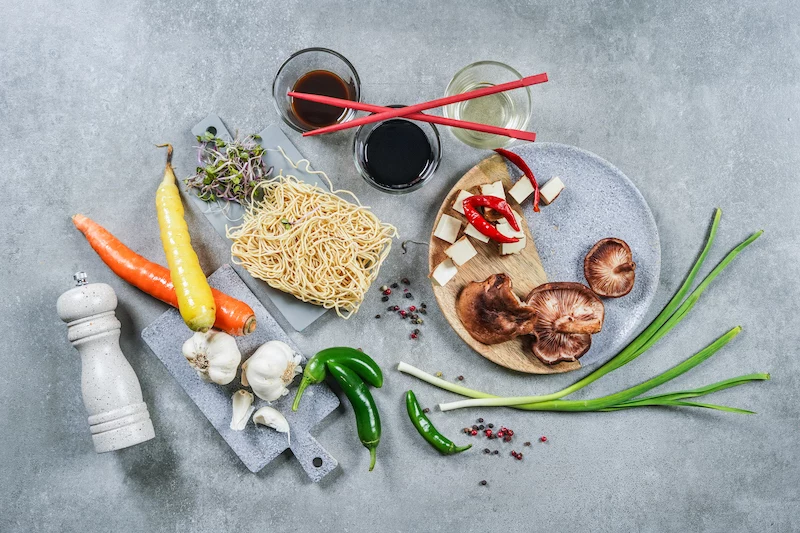
Quick heads up on timing: This is totally a weeknight-friendly meal. Plan on about 20-25 minutes for prep (all your chopping) and then a blazing fast 10-15 minutes of actual cooking. Let’s build this thing from the ground up.
The Secret is a Balanced Sauce
A great sauce isn’t just about dumping ingredients into a bowl. It’s about understanding how they play together. In pro kitchens, recipes are just a starting point; the real skill is in tasting and adjusting until you hit that perfect harmony. Your core team is always: sweet, sour, and savory (umami).
The Sweet Side
Sweetness is what rounds out the sharp bite of the vinegar and helps create that rich, glossy sauce we all love. You’ve got a few options, and each brings its own personality to the dish.
- Coconut Sugar: This is a fantastic choice. It has a lovely, mild caramel flavor and dissolves beautifully, giving your sauce a nice amber color.
- Brown Sugar: A solid, reliable option. The molasses in it adds a welcome depth. I lean towards dark brown sugar for a richer, more robust flavor profile.
- Honey or Maple Syrup: These liquid sweeteners mix in easily, but be mindful of their distinct flavors. A really strong, floral honey can sometimes take over the whole dish. Give it a taste first!
- Pineapple Juice: For a more traditional, fruity vibe, unsweetened pineapple juice is a classic move. It brings both sweetness and a gentle acidity to the party.
Whatever you use, the goal is to dissolve it completely over gentle heat. Nobody wants a grainy sauce. And please, don’t let it burn, or the whole thing will be ruined.
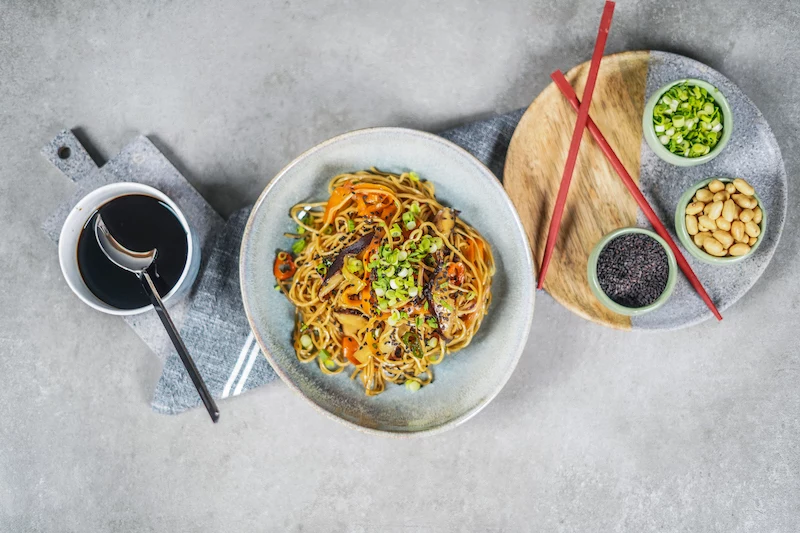
The Sour Punch
Acidity is what makes a sweet and sour sauce exciting. It cuts through the richness and keeps the dish feeling bright and clean. Your choice of vinegar here is CRITICAL.
- Rice Vinegar: This is the industry standard for a reason. It’s clean, mild, and just a little bit sweet, providing sourness without being aggressive. When in doubt, this is the one to use.
- Apple Cider Vinegar: A decent substitute that adds its own fruity note. If you go this route, grab an unfiltered, raw version for the best flavor.
- Chinkiang Black Vinegar: Okay, this is the advanced-level choice for an incredible depth of flavor. It’s a dark, malty, and complex Chinese vinegar with a hint of smokiness. A little goes a long way, but it’s a game-changer. You can find it at most Asian markets or online—a bottle is usually a steal at around $5-$8 and will upgrade dozens of future meals.
Oh, and a word of warning: please, please avoid plain white distilled vinegar. Trust me, I tried it once in a pinch during a busy service, and the head chef almost had my hide. It’s just too harsh and one-dimensional. It’s great for cleaning your coffee maker, not for a delicate sauce.
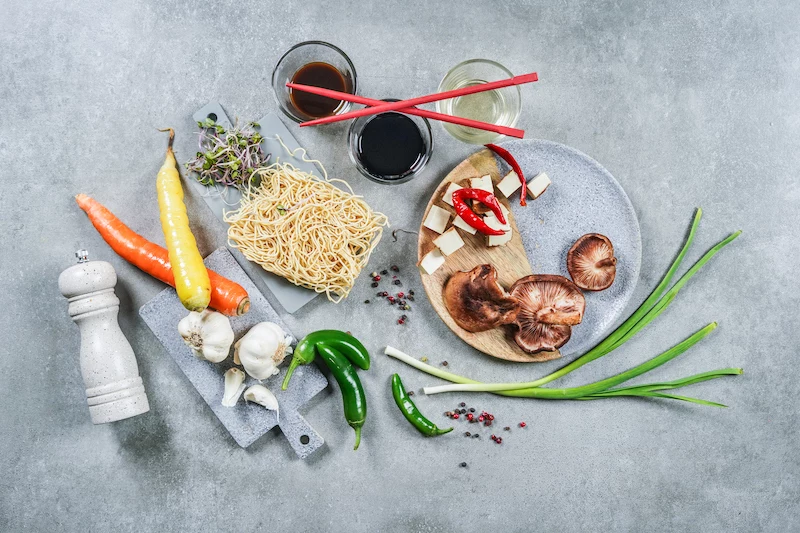
The Savory & Salty Foundation
This is the backbone of the sauce—that deep, satisfying flavor that keeps you coming back for another bite. Soy sauce is the key player here.
- Light Soy Sauce: This is your primary salt source. It’s thinner and lighter in color, and its main job is to season the dish.
- Dark Soy Sauce: Less salty and a tad sweeter, this one’s all about adding that rich, dark color and a deeper, more complex flavor. Most kitchens use a mix of both for the perfect balance.
- Tamari: If you’re avoiding gluten, tamari is the perfect swap. It’s made with little to no wheat and has a wonderfully rich, smooth flavor.
- A Dash of Worcestershire? Some fusion recipes call for it. It’s not traditional, but its tangy, savory kick from ingredients like anchovies and tamarind can be interesting if you’re feeling experimental.
Pro Tip: You can absolutely make the sauce ahead of time! Mix everything up (except the cornstarch slurry) and store it in a sealed jar in the fridge. It’ll keep for up to two weeks, making a weeknight stir-fry ridiculously fast.
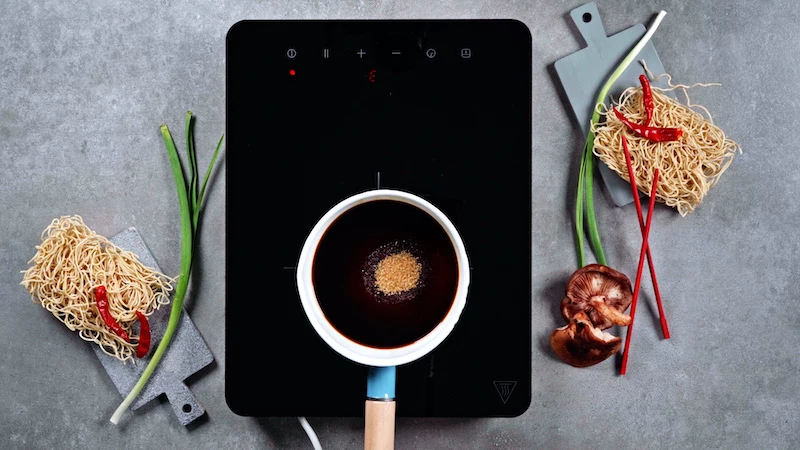
Getting the Wok Technique Right
The pan you use genuinely makes a difference. A stir-fry from a flat skillet just doesn’t have the same soul as one from a proper wok. Its unique bowl shape is purpose-built for super-high heat and lightning-fast cooking.
Why a Wok Works
A carbon steel wok is the undisputed king in professional kitchens. It gets incredibly hot, heats evenly, and builds up a natural non-stick surface (a ‘patina’) over time. The bowl shape creates heat zones: the bottom is scorching hot for searing, while the sloped sides are cooler for holding ingredients that are already cooked. This gives you amazing control.
Heads up for beginners: If you buy a new carbon steel wok, you MUST season it before you use it. It’s a simple process of heating it with oil to create that non-stick layer. If you skip this, your first meal will be a sticky disaster. Just look up a quick guide on “how to season a wok”—it’s essential!
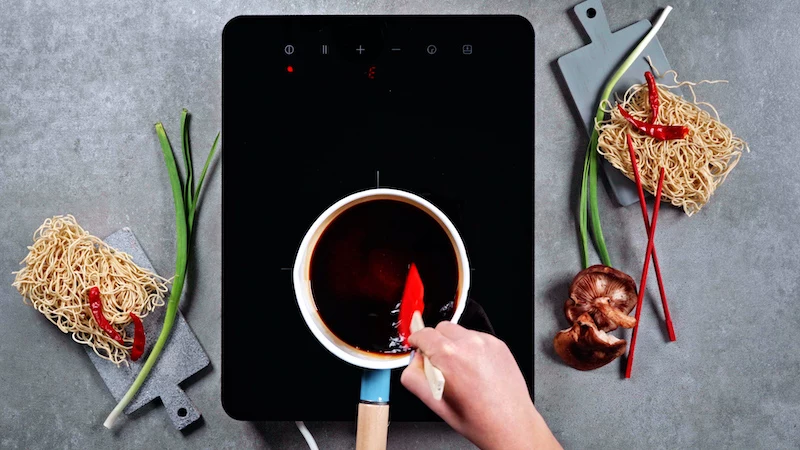
No wok? A big, heavy cast-iron skillet is your next best bet. The key is getting it ripping hot and cooking in smaller batches to prevent the food from steaming.
Chasing that ‘Wok Hei’ Flavor
You’ve probably heard of wok hei, or the “breath of the wok.” It’s that smoky, almost indescribable flavor that makes restaurant stir-fries so good. It’s created when tiny droplets of oil and food vaporize and ignite over a powerful commercial flame, infusing the food with smokiness.
It’s tough to get that full effect on a home stove, but you can get darn close:
- Use a carbon steel wok. It simply gets hotter than other pans.
- Get it SCREAMING hot. Wondering what that really means? Flick a single drop of water into the dry wok. If it sizzles and evaporates in a second or two, you’re ready to add the oil.
- Don’t crowd the pan! This is the #1 mistake. Too much food drops the temperature, and your veggies will steam instead of fry. Cook in batches if you need to.
- Keep it moving. Use a constant scooping and tossing motion to aerate the food and get that beautiful char.
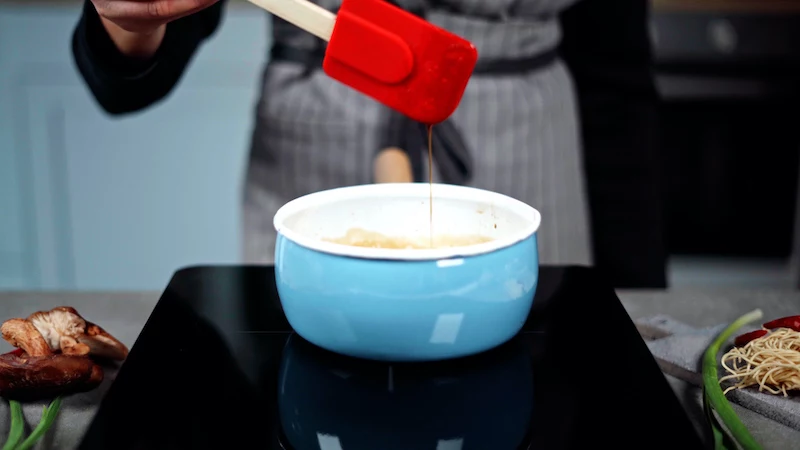
The Magic of ‘Mise en Place’
In a pro kitchen, everything is prepped and ready in little containers before cooking starts. This is mise en place—”everything in its place.” Stir-frying happens so fast that you won’t have time to chop an onion or measure soy sauce once you start. This single habit will make cooking less stressful and prevent you from burning anything. Do it. You’ll thank me later.
Choosing Your Ingredients
A great dish starts with great ingredients. From the crunch of the veggies to the chew of the noodles, every choice matters.
Picking Your Veggies
The fun part about this dish is its flexibility. A good rule of thumb is to use a variety of colors and textures, and—most importantly—to understand their different cooking times.
- Hard Veggies (go in first): Think carrots, broccoli stems, and bell peppers. They need a head start.
- Medium Veggies (go in next): Things like shiitake mushrooms, snap peas, and bok choy stems cook pretty quickly.
- Soft Veggies (go in last): Bean sprouts, spinach, and leafy greens need just a few seconds to wilt at the very end.
Also, how you cut them matters. Uniform pieces cook evenly. That small detail is what makes a dish feel professional.

Time-Saving Hack: On a busy night, there’s no shame in using a bag of pre-chopped stir-fry vegetables from the grocery store. It cuts your prep time in half!
The Right Noodle for the Job
The noodles are the vehicle for all that amazing flavor, so their texture is key. You want something with a good chew, not a mushy mess.
- Chinese Egg Noodles: The classic choice for a reason. Look for the fresh ‘lo mein’ style noodles in the refrigerated section of your supermarket or local Asian grocery. Their springy texture is perfect.
- Udon Noodles: These thick, chewy Japanese wheat noodles are a fantastic and hearty option.
- Rice Noodles: A great gluten-free choice. I prefer the flat, wide kind (like for Pad Thai), but be careful not to overcook them.
My big noodle secret: Cook them until they are al dente (still a little firm to the bite) because they’ll finish cooking in the wok. Immediately after draining, rinse them under cold water. This stops the cooking and washes off excess starch so they won’t clump into a sticky ball.
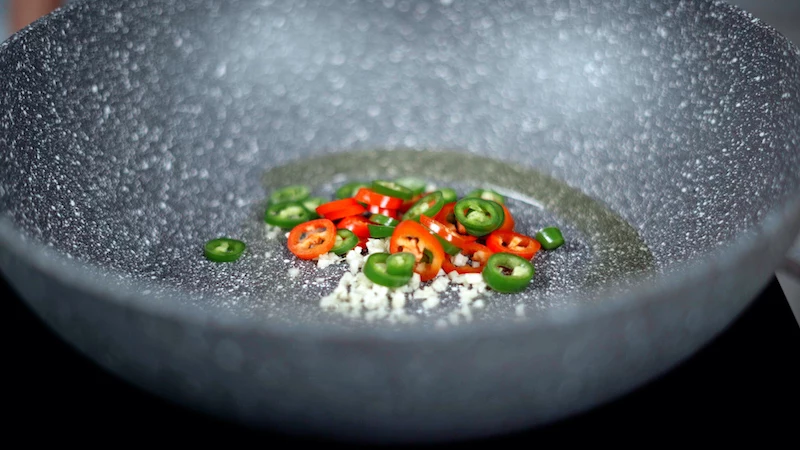
The Step-by-Step Method
Alright, let’s put it all together. Follow the steps, but also use your senses—your eyes, ears, and nose will tell you when things are ready.
What You’ll Need:
Gear:
- A 14-inch carbon steel wok or large cast-iron skillet
- A small saucepan
- A pot for your noodles
- A sharp knife and cutting board
- Small bowls for your prepped ingredients
- A long-handled wok spatula
Ingredients:
For the Sauce:
- 4 tbsp soy sauce (I like 2 tbsp light for salt, 2 tbsp dark for color)
- 3 tbsp rice vinegar
- 4 tbsp coconut sugar or brown sugar
- 1 tbsp Chinkiang black vinegar (optional, but so good)
- 1 tsp sesame oil (for finishing at the end)
- 1 tbsp cornstarch mixed with 2 tbsp cold water (this is your ‘slurry’)
For the Stir-Fry:
- 2 tbsp high-smoke-point oil (like avocado, peanut, or canola oil)
- 2 cloves garlic, minced
- 1-inch piece of ginger, minced
- 1 small chili, thinly sliced (optional, for a kick)
- 1 large carrot, thinly sliced on a diagonal
- 1 red bell pepper, cut into 1-inch squares
- 1 cup shiitake mushrooms, sliced
- About 8 oz (225g) of your chosen noodles, cooked al dente and rinsed
- 1 cup fresh bean sprouts
- 2 green onions, thinly sliced (whites and greens separated)
- 1 tbsp toasted sesame seeds (for garnish)
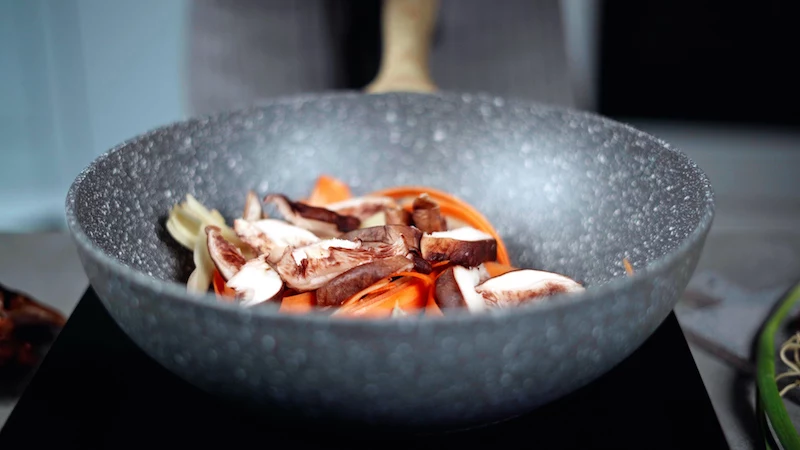
The Process:
- Get Your Station Ready: This is your mise en place. Chop everything. Mince the aromatics. Cook and rinse your noodles. Mix your cornstarch slurry. Line it all up near the stove.
- Make the Sauce: In your small saucepan, combine the soy sauce, rice vinegar, and sugar. Gently warm it over low heat, stirring just until the sugar dissolves. Take it off the heat and taste it. Need a bit more sweet? A touch more sour? Adjust it now. Set it aside.
- Heat the Wok: Get your wok on the stove over the highest heat possible. Let it get seriously hot for a minute or two before you add anything.
- Add Oil & Aromatics: Swirl in your oil—it should shimmer instantly. Once you see the very first wisp of smoke, toss in the garlic, ginger, chili, and the white parts of the green onions. Stir-fry like mad for 15-20 seconds until it smells amazing. Don’t let it burn!
- Cook the Hard Veggies: Throw in the carrots and bell peppers. Keep tossing and stir-frying for 2-3 minutes. You want them tender-crisp with a few nice charred spots.
- Cook the Softer Veggies: Add the shiitake mushrooms and cook for another minute until they’ve softened and started to brown.
- Add Noodles: Toss in your cooked, rinsed noodles. Use your spatula to gently break them up and let them fry for a minute to heat through.
- Add the Sauce: Pour your prepared sauce all over everything. It will bubble and sizzle as it hits the hot wok. Toss quickly to coat everything evenly.
- Thicken It Up: Give your cornstarch slurry a quick re-stir (it separates fast!) and pour it in while stirring constantly. The sauce will thicken and turn beautifully glossy in about 30 seconds.
- Finish: Turn off the heat. Add the bean sprouts and the green parts of the onions. Drizzle with that final teaspoon of sesame oil and give it one last toss. The residual heat will cook them perfectly without making them soggy.
- Serve Immediately: Get it into bowls right away and garnish with toasted sesame seeds. A stir-fry waits for no one!
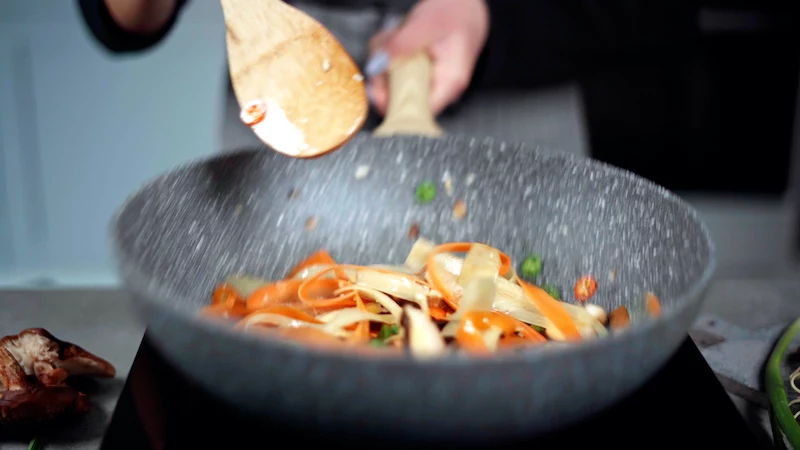
Quick Fixes for Common Problems
Even pros mess up sometimes. Here’s how to fix things when they go sideways.
- My veggies are soggy… Your wok wasn’t hot enough, or you put too much in at once. Next time, wait for that oil to shimmer and cook in smaller batches.
- My noodles turned into a sticky blob… You probably overcooked them or forgot to rinse them in cold water. That rinse is a non-negotiable step to wash away the sticky surface starch.
- The sauce is too thin/thick… Too thin? Add a tiny bit more cornstarch slurry. Too thick? Stir in a tablespoon of water or broth until it’s the consistency you like.
- My garlic burned and everything tastes bitter… Ah, the classic mistake. Minced garlic burns in seconds. Make sure you’re stirring constantly from the moment it hits the pan and are ready to add your veggies right after to cool things down a bit.
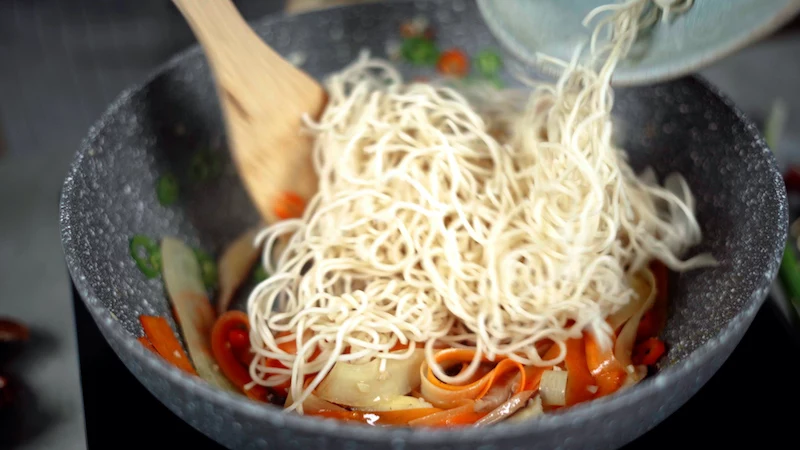
Want to add protein? Try ‘Velveting’
If you want to add chicken, pork, or shrimp, use a pro technique called velveting to keep it incredibly tender.
- Slice about 8 oz of chicken breast very thin.
- Toss it in a bowl with 1 tbsp cornstarch, 1 tbsp soy sauce, and 1 tbsp rice wine. Let it marinate for 15 minutes.
- Blanch the chicken in simmering water for just 30-45 seconds until it’s no longer pink. Drain it well.
- Add your velveted chicken to the wok along with the softer veggies. It’s already cooked, so it just needs to be heated through and coated in that glorious sauce.
A Final Word on Safety & Storage
Working with a blazing hot wok demands respect. Be careful!
- Safety First: Hot oil splatters. Keep a lid nearby to smother any potential flare-ups (and never use water on an oil fire!). Make sure your kitchen has good ventilation—turn that exhaust fan on high.
- Storage: Leftovers can be stored in an airtight container in the fridge for up to 3 days. Just know that the veggies won’t be as crisp when you reheat them. It’s best enjoyed fresh, but still tasty the next day.
Ultimately, this method is more than a recipe—it’s a set of principles. Once you get a feel for the heat, the timing, and the balance, you can stop following recipes to the letter and start creating. That’s the real joy of it.
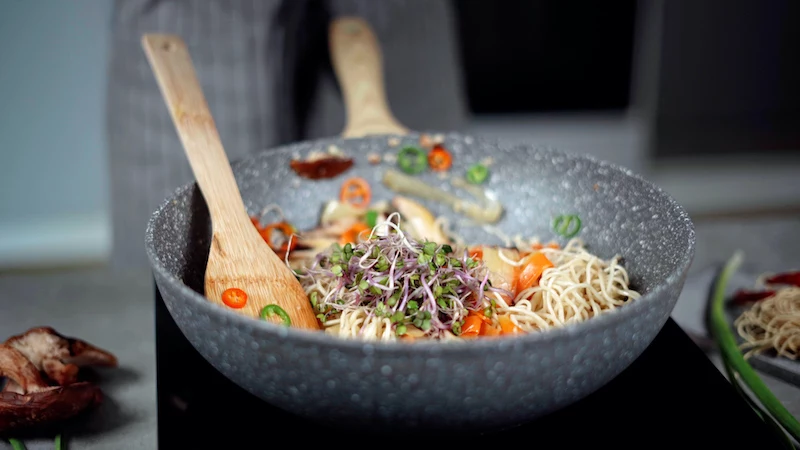
Inspirational Gallery
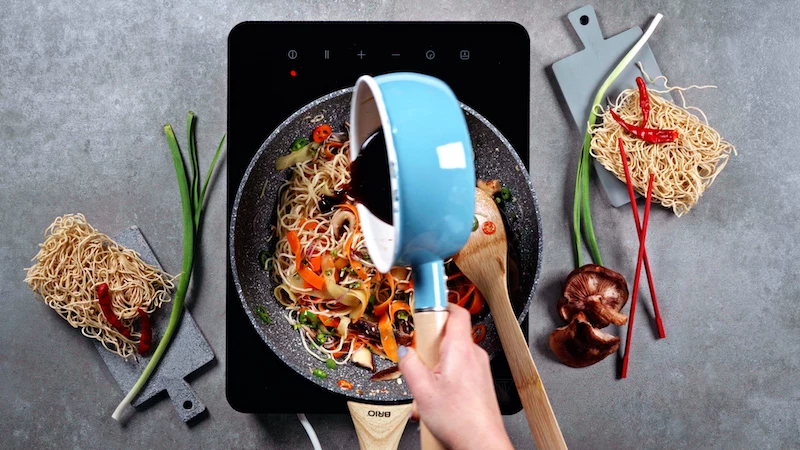
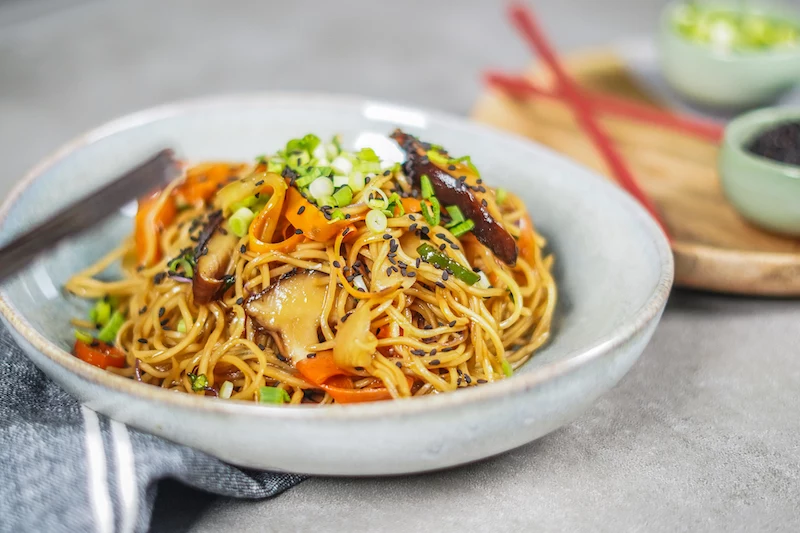
The Wok vs. The Skillet: A classic carbon steel wok is the pro choice for its sloped sides that make tossing ingredients a breeze and create distinct heat zones. The high heat concentrates at the bottom for a perfect sear.
No Wok? No Problem: A heavy cast-iron skillet, like a 12-inch one from Lodge, is your best alternative. It provides intense, even heat retention, crucial for getting that beautiful char on your vegetables and protein.
The key, regardless of your tool, is to get it screaming hot before anything goes in.
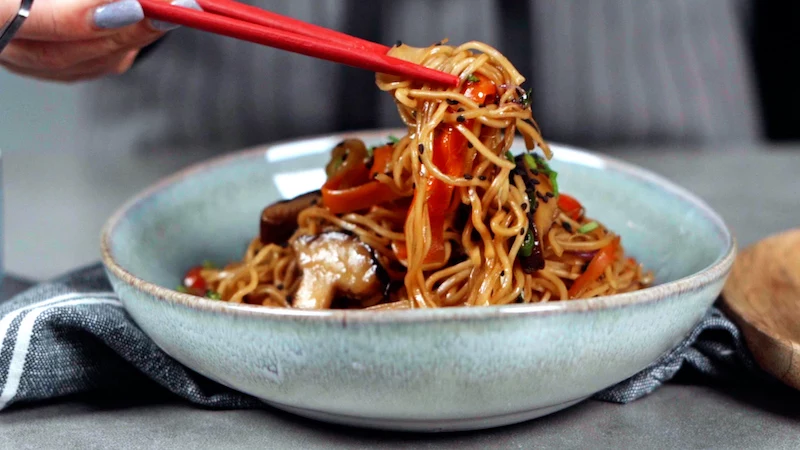
What’s the secret behind that amazing, smoky flavor in restaurant stir-fries?
That elusive taste is called “wok hei,” or the “breath of the wok.” It’s a complex flavor created when vaporized droplets of oil catch fire in a seasoned, blazing-hot wok. While hard to fully replicate at home, you can get close: use a high-smoke-point oil (like grapeseed or peanut oil), make sure your pan is incredibly hot before adding food, and cook in small batches to maintain that high temperature. The sizzle is the sound of success!
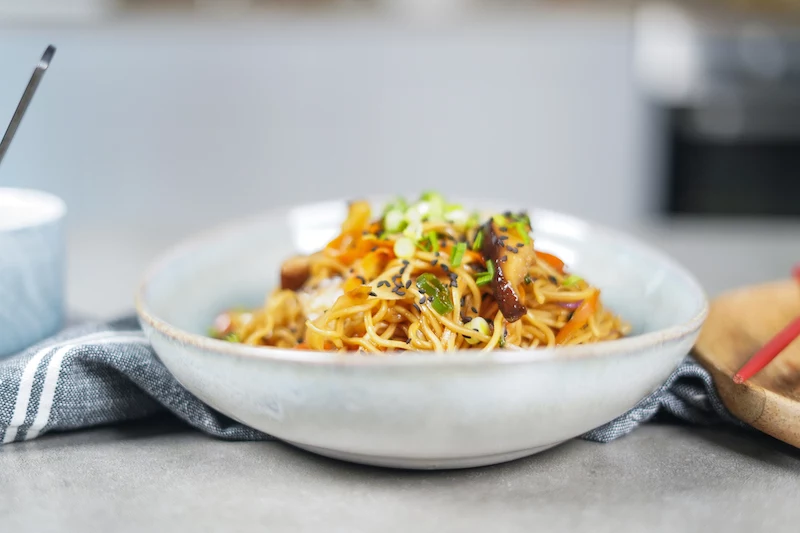
A study in the journal Flavour found that visual presentation can enhance the perception of a dish’s taste by up to 27%.
Make your noodles taste even better before the first bite. Create contrast with a final flourish of vibrant green scallions or fresh cilantro. Add a textural crunch with a sprinkle of toasted sesame seeds. For a pop of heat and color, a few rings of thinly sliced red chili work wonders. It’s the five-second step that makes the meal feel truly special.
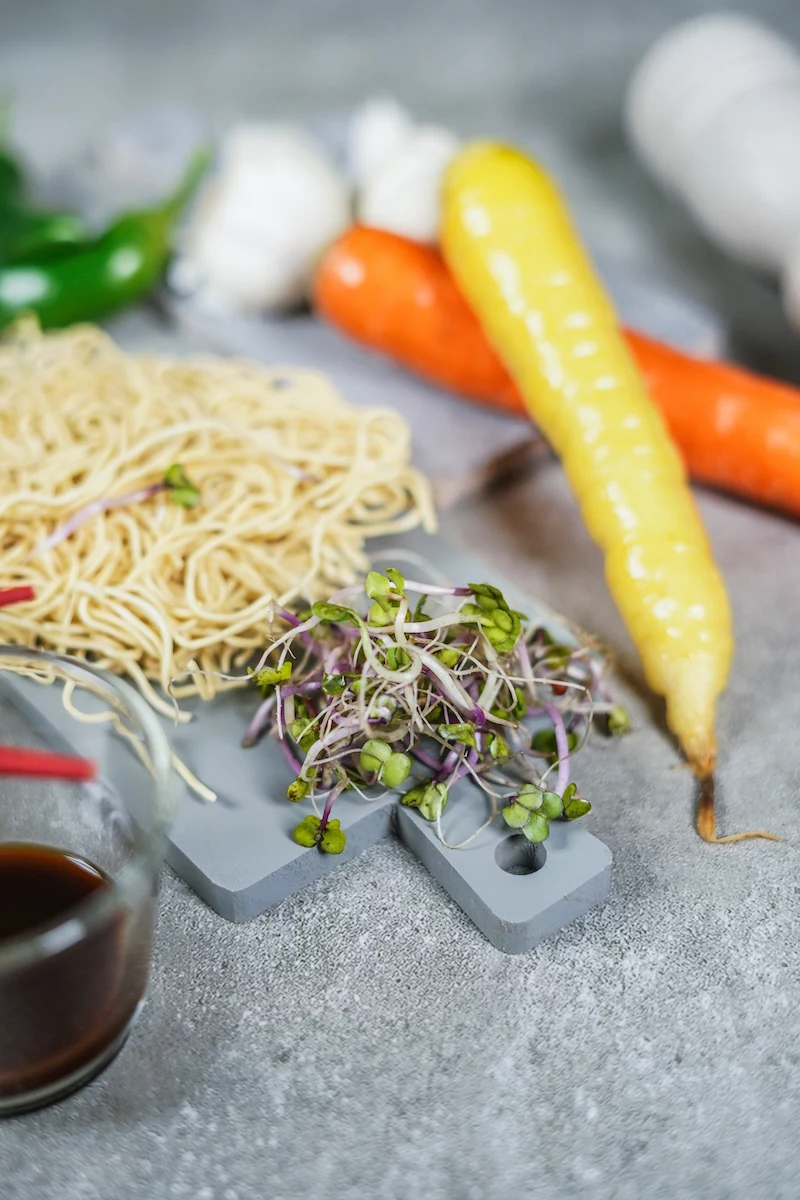
The one rule you can’t break: Do not overcrowd the pan. Tipping all your ingredients in at once is a surefire way to drop the temperature, steaming your veggies into a soggy mess instead of getting that crisp, vibrant sear. If your pan isn’t big enough for everything to have its own space, cook in two separate batches. It’s the single most important trick for achieving that professional texture.
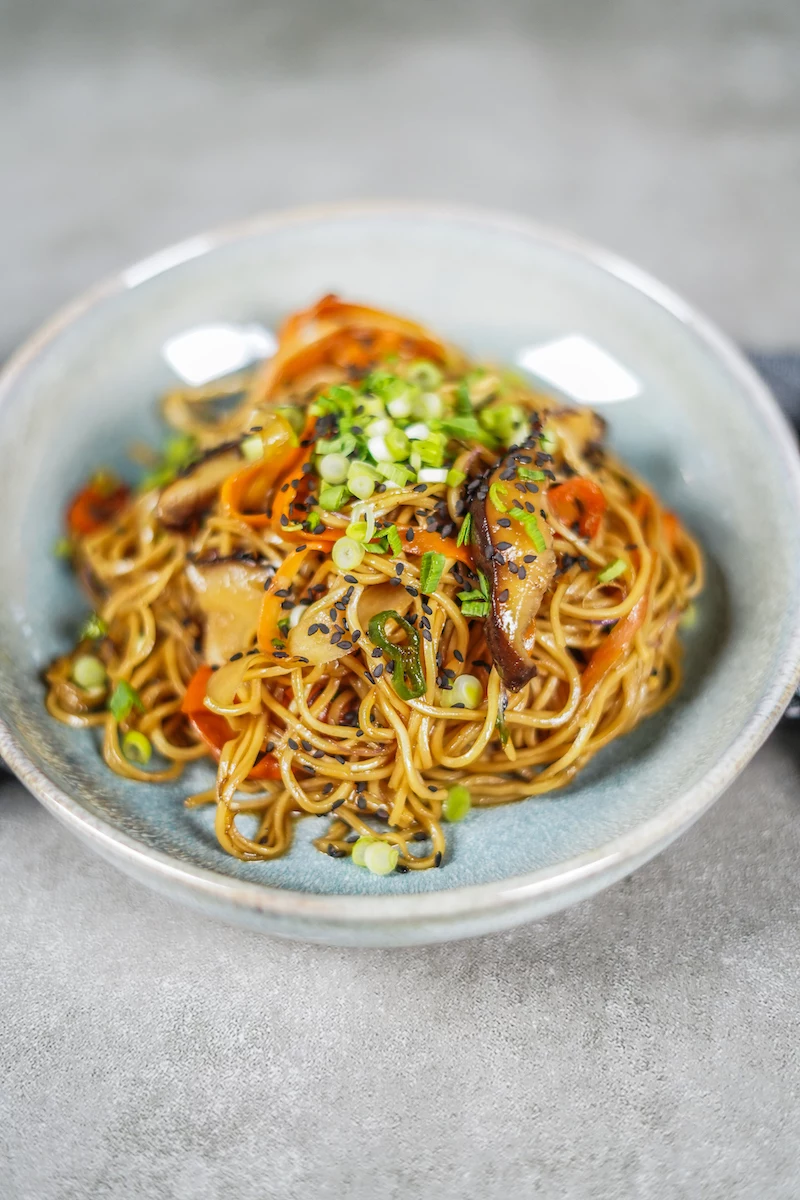
- Fresh Udon or Ramen: Their satisfying, chewy texture holds up beautifully to the vibrant sauce.
- Dried Egg Noodles: A classic for a reason. They cook in minutes and have a wonderful, rich flavor.
- Wide Rice Noodles: For a gluten-free twist, these offer a delightful silky-smooth contrast to the crisp veggies.
The secret? Whichever you choose, undercook them slightly. They’ll finish cooking in the hot sauce, absorbing all that flavor without turning mushy.
The globally recognized sweet and sour sauce is largely a Cantonese invention, using ketchup and pineapple to appeal to Western palates.
While the article’s recipe creates a more balanced, savory version, this Westernized style is the ancestor of most takeout sauces. The original concept from China’s Hunan province was a much simpler, sharper dressing for fish, showing how one flavor profile can evolve dramatically.










